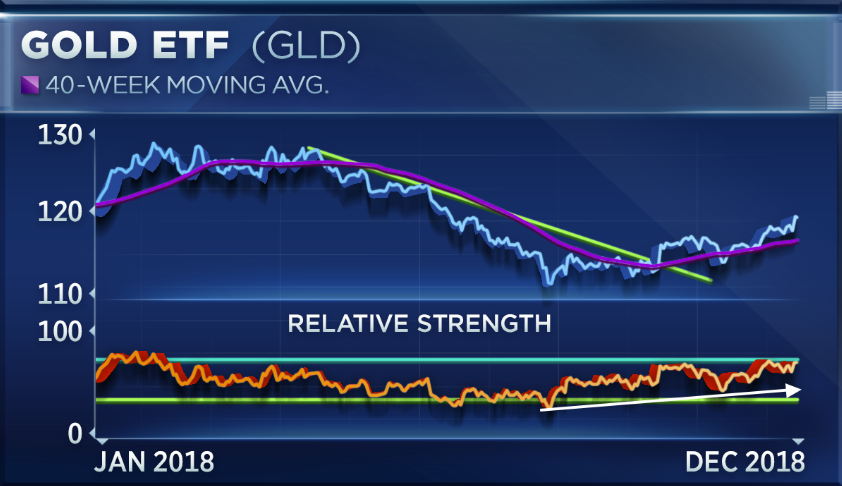
How much people borrow to attend college can become just a small share of what they wind up owing.
Currently, fewer than a quarter of student loan borrowers are repaying their principal, or the amount they originally took out, according to recent remarks made by Education Secretary Betsy DeVos at a conference on financial aid.
That’s because their monthly payments are just going to the interest accumulating on their debt or they’re not paying anything right now.
In the meantime, their debt is likely growing.
For example, law school graduate Rick Tallini borrowed around $55,000 in the 1990s. He’s since struggled to find employment and pay the bills, and today his student loan balance has ballooned to well over $300,000.
Story like his are common, said Persis Yu, director of the Student Loan Borrower Assistance Project at the National Consumer Law Center. “Loans doubling, tripling, quadrupling; it really does happen all the time,” Yu said.
CNBC worked with student loan expert Mark Kantrowitz to explain some of the common reasons people see their balances climb.
Let’s say you started with $50,000 in federal, unsubsidized student loans, with a 5 percent interest rate.
Interest will accrue on your debt while you’re in school. It will continue to do so during your grace period, the six months after graduation during which borrowers are typically not required to make payments.
When your bills start rolling in, your debt has already increased by $6,458. So even though you borrowed $50,000, when your payments start you owe $56,458.
… How to avoid it:
Students can keep interest at bay by making at least interest-only payments while they’re in school and during their grace period, said Teddy Nykiel, a student loan expert at personal finance website NerdWallet.
You will only need to pay the interest on any private or unsubsidized loans during these periods, Kantrowitz said. The government pays the interest on subsidized loans while you’re in school and during your grace period.
Reach out to your loan servicer and ask for assistance making your proactive payments. Kantrowitz recommends finding out if your lender offers any discounts on your interest rate if you make payments while you’re in school, as some, like Sallie Mae, do.
Not everyone finds work right out of school, and some people are eligible to postpone their student loan payments. One way to do that is through an “economic hardship deferment.” If you requested the maximum amount of time under that option, you could put off your payments for three years.
However, doing so will slap another $8,469 onto your debt. Your balance is now $64,927.
…How to avoid it:
If your federal student loans are subsidized, interest will not accrue during an economic hardship deferment.
Before a borrower with unsubsidized loans opts for a deferment, they should research repayment options that might make their bill less burdensome, said Elaine Griffin Rubin, senior contributor and communications specialist at Edvisors.
Income-driven repayment plans, for example, cap your monthly bill at a percentage of your income. Some payments come out to as little as $0.
If you do end up deferring your payments, “every effort should be made to pay the monthly interest accruing,” Griffin Rubin said.
Deferments aren’t the only way you can take a break from your student loan payments; you can also put your loans into “forbearance.” During that postponement, interest accrues on both subsidized and unsubsidized loans.
Nearly 70 percent of people who began repaying their student loans in 2013 had their debt for at least a period of time in forbearance, according to a report by the Government Accountability Office.
If you had your debt in forbearance for three years, yet another $9,739 would be tacked on to your balance.
Although you originally borrowed $50,000, you now owe $74,666.
… How to avoid it:
If your loans are subsidized, first see if you’re eligible for a deferment, since the interest will not accrue under that option.
For unsubsidized loans, for which you simply can’t afford your payments, you should again consider enrolling in an income-driven repayment plan, Nykiel said.
Let’s say you make payments on your student debt for a year, but you do so irregularly. Interest will still pile up, because you’re not chipping away at your principal. Your balance swells by another $3,417, and you now owe $78,083.
… How to avoid it:
Compare your repayment plan options and pick the one that comes with a monthly amount you’ll be able to handle. On the Department of Education’s website, you can plug in your salary information and see your options.
You can also set up automatic payments, so you don’t have to worry about forgetting when your bill is due.
If you stop paying your student loans, expect your balance to grow a lot.
“Consolidation” or “rehabilitation” — the ways student loan borrowers can rescue their debt from default — are processes that can come with hefty fees.
After a rehabilitation, for example, your balance would grow to $97,045 from $78,083, after interest, collection fees and late charges. And most people who go through this process will default again, making their balance grow even more.
By now, your loan balance has nearly doubled from what you originally borrowed.
… How to avoid it:
“If borrowers are struggling to make their monthly payments, they should contact their student loan servicer as soon as possible,” Griffin Rubin said.
Signing up for an income-driven repayment plan can make sure that you don’t owe an unreasonable amount compared to your income.
Have you had a bad experience with refinancing your student loans? Did the process save you less money than you thought it would? We want to hear from you. Please email me at annie.nova@nbcuni.com
More from Personal Finance:
Workers with company stock might have too much investment risk
Leaving an IRA to a loved one? How to avoid a tax bomb
What to do if you’re 50 or older with no retirement savings

